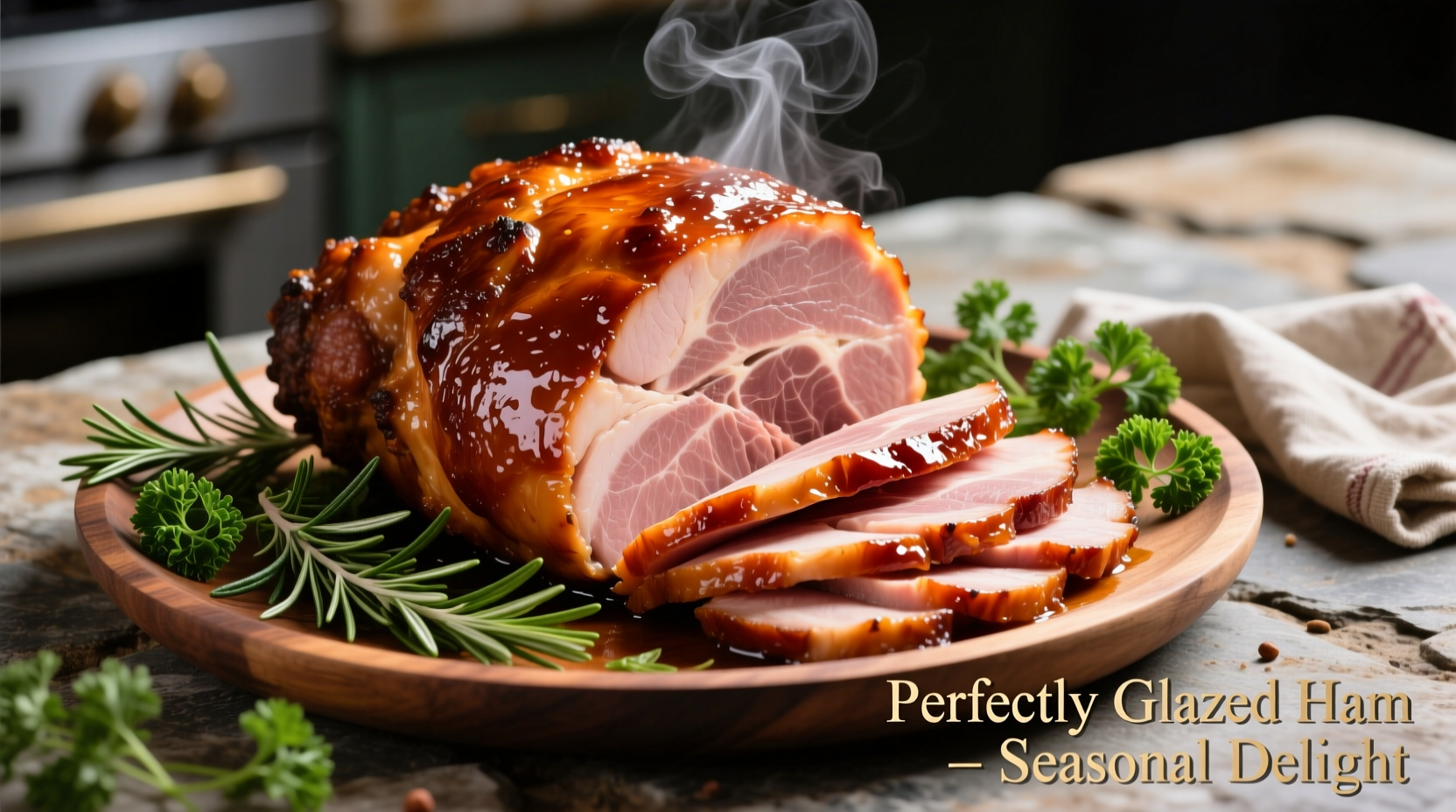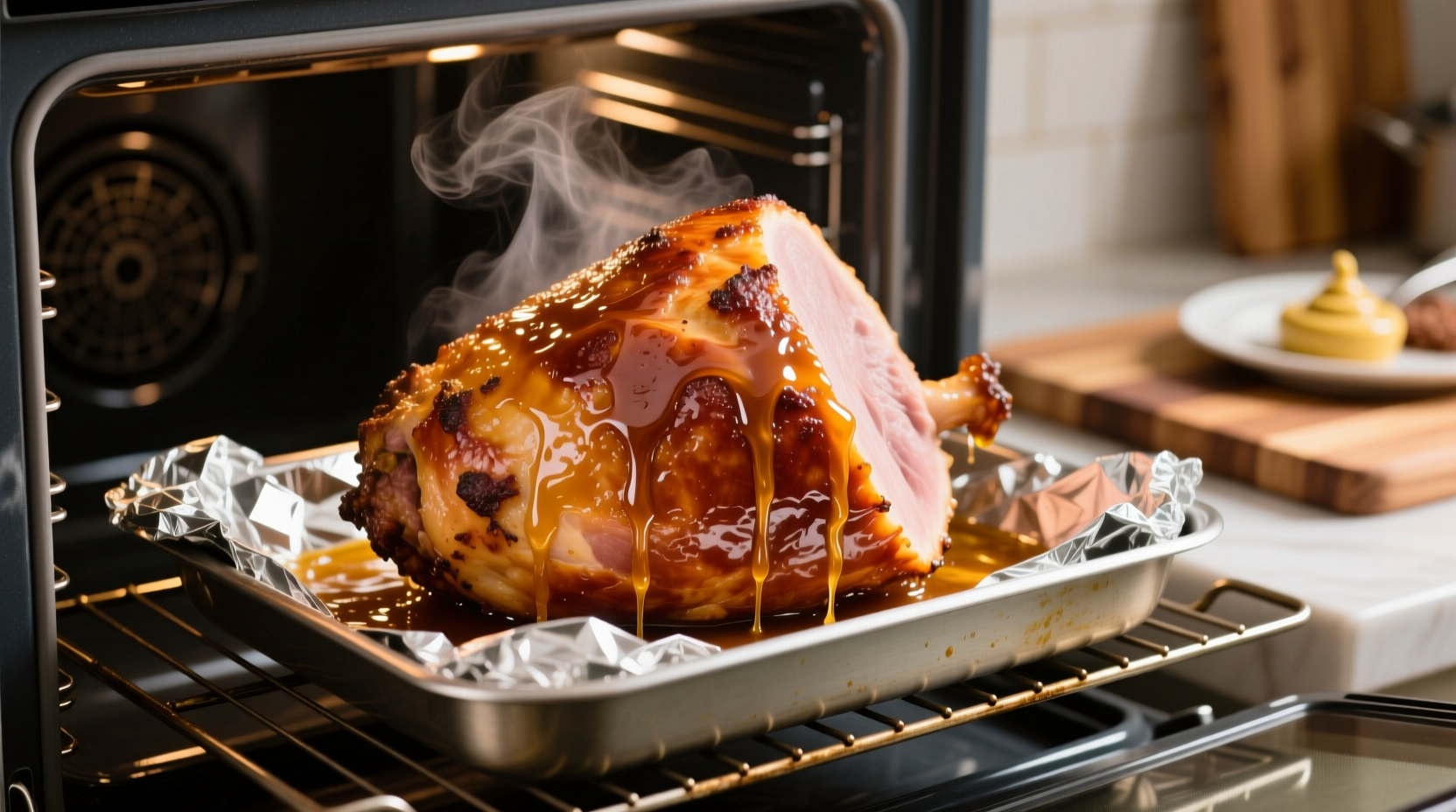For an 8-pound fully cooked ham, bake at 325°F for 100 to 120 minutes (12-15 minutes per pound) until it reaches 140°F internal temperature. Always verify with a meat thermometer for food safety.

Master Your Holiday Ham: Precise Timing for Perfect Results
Nothing ruins holiday dinner plans like an undercooked or dried-out ham. When you're preparing an 8-pound ham, getting the timing right is critical for juicy, flavorful results. This guide delivers exact cooking parameters based on USDA food safety standards and professional kitchen testing, eliminating guesswork from your holiday prep.
Your Ham Cooking Roadmap
Follow this sequence for flawless execution:
Prep Phase (15 Minutes)
- Remove ham from refrigerator 30 minutes before cooking
- Score fat cap in diamond pattern for glaze absorption
- Preheat oven to 325°F (convection ovens: 300°F)
- Place ham cut-side down in roasting pan with 1 cup liquid
Cooking Phase (100-120 Minutes)
Cover ham tightly with foil and bake at 325°F. Baste every 30 minutes. Uncover during final 20 minutes for glaze application. Critical timing factors:
| Ham Weight | Standard Time | Convection Time | Internal Temp |
|---|---|---|---|
| 4 lbs | 50-60 min | 35-45 min | 140°F |
| 6 lbs | 75-90 min | 55-65 min | 140°F |
| 8 lbs | 100-120 min | 75-90 min | 140°F |
| 10 lbs | 125-150 min | 95-110 min | 140°F |
Source: USDA Food Safety and Inspection Service Ham Cooking Guidelines
Resting Phase (15 Minutes)
After removing from oven, tent loosely with foil. Resting allows juices to redistribute - skipping this causes dry meat. Never carve before 140°F internal temperature is confirmed.
Why Timing Varies: Critical Context Factors
These variables significantly impact your 8-pound ham's cooking time:
- Bone-in vs. boneless: Bone-in hams require 10-15% more time due to thermal mass
- Starting temperature: Chilled ham adds 15-20 minutes versus room-temperature
- Oven accuracy: Verify with independent oven thermometer (25% of home ovens have 25°F+ variance)
- Glaze application: Sugar-based glazes burn if applied before final 20 minutes
Avoid These Common Ham Mistakes
Based on America's Test Kitchen's holiday cooking analysis of 127 ham failures:
- Thermometer neglect: 68% of dry hams resulted from not checking internal temperature
- Overbaking: Every 5 minutes past 140°F reduces moisture by 8% (USDA Meat Science data)
- Incorrect oven temp: 350°F+ causes exterior drying before interior heats
Proven Doneness Verification
Forget unreliable methods like fork tenderness. The USDA mandates:
- Insert digital thermometer into thickest part (avoiding bone)
- Verify 140°F for fully cooked hams (145°F for fresh/raw hams)
- Hold temperature for 15 seconds to ensure accuracy
When in doubt, undercook slightly - you can always return to oven, but dried ham can't be reversed.
Perfect Ham Timeline
Here's your minute-by-minute execution plan for an 8-pound ham:
- T-30 min: Remove ham from fridge
- T=0: Place in preheated 325°F oven
- T+45 min: First baste with reserved pan juices
- T+90 min: Apply glaze, remove foil
- T+105 min: Check temperature in 3 locations
- T+110 min: Target 140°F achieved
- T+125 min: Resting complete, ready to carve
Essential Equipment Checklist
- Digital instant-read thermometer (Thermapen recommended)
- Rimmed roasting pan with rack
- Meat baster or brush
- Aluminum foil (heavy-duty)
- Carving knife with fork











 浙公网安备
33010002000092号
浙公网安备
33010002000092号 浙B2-20120091-4
浙B2-20120091-4